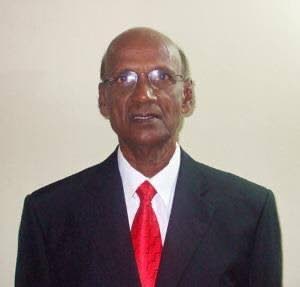East Indians and group identity

THE EDITOR: The nostalgia of my boyhood days in the sugar barracks of Golconda was not the only impact of my return this month. I seemed to have developed a greater sense of awareness as the son of indentured labourers of how I had benefitted from their toil to ensure that my siblings and I “take learning" to avoid their unhappy fate.
For them education was key, and with the opportunity for such, facilitated by the work of the Canadian missionaries in sugar estates like ours, I am what I am today, as has been the case with many other children of East Indian descent growing up in a similar environment.
This is no “racial talk” as some may be inclined to think, their “mindset” conditioned by how racially divided we are as a people because of our brand of racial politics.
Group consciousness is beneficial for a developing society for it allows groups to build and sustain themselves, culturally drawing on their ancestral heritage as they co-exist peacefully, in the way East Indians do with their inherited customs and rituals; as Africans out of their Orisha heritage and other elements that are the inspiration for Carnival, calypso and cuisine; as the Chinese with their Double Ten; as the Syrians with their own customs in their close-knit communities; as the indigenous peoples with their own rituals, music and dance, all at the same time contributing to our rich diversity,
They are much like the rainbow, beautiful in its totality but its individual colours clearly identifiable, or the popular "fat soup" on a Saturday, unrivalled for its unique taste because of the blend of its ingredients, like the cassava, the eddo, the fig, but each clearly identifiable from one another.
It is difference in diversity at its compelling best and perfectly in tune with man and nature, the one with many peoples of different colours and creeds and the other in its plants and animals in their infinite variety.
But difference only becomes a problem when the preoccupation with group identity degenerates into identity politics with one group or entity seeking to dominate another or encroach on its space.
The trees in your backyard co-exist peacefully and thrive once well spaced out, but become stultified if they are crowded. But man’s history speaks to encroachment and domination as the Way in the World (VS Naipaul); with the idea of empire as its supreme manifestation (the Russia/Ukraine conflict case in point in the present); in America with black Americans versus white; in Africa with Hutus against Tutsis; in the Middle East with Sunnis in conflict with Shia; in India with Brahmins against untouchables; in Peru with indigenous peoples against the establishment; in Australia with black aborigines in conflict with whites; and the Rohingya in Myanmar, a classic example of human domination and abuse of another at its worse.
It seems as if it is man’s nature to want to dominate others, beginning with the caveman clubbing his rival to death for survival (Charles Darwin’s idea of “the survival of the fittest”) and that tendency now translating itself into the present in the preoccupation with the politics of power and control leading to a culture of domination of one group by another.
Which is the original inspiration of this letter, for even as the return to my roots in the barracks of Golconda made me feel proud of the work ethic and resilience of my parents carving a niche in a land far away from home, with the politics after independence forcing us into different political identities, PNM for Africans and UNC for East Indians, I feel sad and disappointed that East Indians are almost always second best with its concomitant “second classness” in this perennial “game of thrones.”
And this is due, in no small measure, to their chosen represenatives who, unable to wrest the power and control from their political opponents, which would perhaps improve their lives, instead, ironically, exercise that same elusive power and control over their own, exploiting their unquestioning loyalty to serve their own political longevity.
The politics notwithstanding, and with the assimilation inevitable with co-existing groups such as ours, of which chutney soca, roti and callaloo, creolisation and douglarisation are worthy illustrations, East Indians as a group have the character and resilience to survive, even against their own kind, and I wish the same for all the other groups in this rainbow country of ours.
ERROL NARINE BENJAMIN
via e-mail


Comments
"East Indians and group identity"